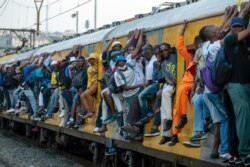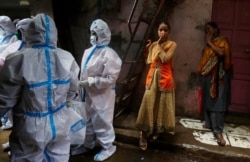While it could take a decade for the world’s poorest to recover from the coronavirus pandemic, the globe’s 1,000 richest people only needed nine months to recoup their fortunes, a new Oxfam report found.
The report, named “The Inequality Virus,” indicates that almost every country on Earth will register an increase in economic inequality due to the pandemic, the first time ever the whole world has followed the same trend.
This means it could take at least 14 times longer for people living in poverty to return to pre-pandemic levels than it took for the super-rich to do so.
For the billionaires, however, the recession seems to be over. The report from the British charity found that the world’s ten richest men have seen their combined wealth increase by half a trillion dollars since the beginning of the pandemic. That would be more than enough to ensure every person on earth got the COVID-19 vaccine and to ensure that no one is pushed into poverty by the pandemic.
“Rigged economies are funneling wealth to a rich elite who are riding out the pandemic in luxury, while those on the frontline of the pandemic ... are struggling to pay the bills and put food on the table,” said Gabriela Bucher, the executive director of Oxfam International.
The pandemic is also having a disproportionate effect on women and minorities.
Women make up around 70% of the global health and social care workforce, often poorly paid jobs that put them at a much higher risk of contracting COVID-19, said the report.
Meanwhile, people of color are dying at much higher rates worldwide. In Brazil, Afro-Brazilians are 40 percent more likely to die of COVID-19 than their white counterparts. In the United States, it is estimated that nearly 22,000 Black and Hispanic Americans would still be alive if they experienced the same mortality rates as white people, according to Oxfam.
“Women and marginalized racial and ethnic groups are bearing the brunt of this crisis,” said Bucher. “They are more likely to be pushed into poverty, more likely to go hungry, and more likely to be excluded from healthcare.”
Last year, the World Bank found that if inequality continues to increase while the global GDP contracts, an extra 501 million people could be living on less than $5.50 a day by 2030. In that scenario, global poverty levels would be much higher by then than they were before the pandemic struck.
The Oxfam report was released ahead of the World Economic Forum’s virtual meetings. Usually held in Davos, Switzerland, the conference was moved to an online format due to the pandemic.











